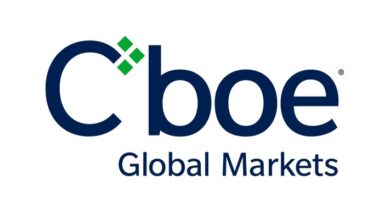Unlocking Bitcoin’s Programmability: The Rising Fame of Bitcoin L2 Solutions

In a recent gathering at the 10th Satoshi Round Table in Dubai, held from the 1st to the 6th of February, the spotlight shifted towards Bitcoin Layer 2 (L2) solutions, emerging as the focal point of discussions among prominent figures in the cryptocurrency space. The event, marked by substantial attendance, highlighted the growing significance and momentum surrounding Bitcoin L2 solutions. Entrepreneurs and founders in the Bitcoin space are experiencing a shift in fortunes, with venture capital actively seeking seed stage deals for Bitcoin L2s and applications.
The focus on Bitcoin has shifted from Spot ETF discussions to the urgent need for programmability improvements in recent weeks. The escalating FOMO around Bitcoin Inscription intensifies as challenges like high network fees and slow settlement speed become more apparent.
Concurrently, the growing number of investors accessing Bitcoin through regulated products opens avenues for exploration in Traditional Finance (TradFi) activities like leveraged trading and collateralized lending. However, a significant concern arises as these products often use a TradFi representation of BTC controlled by issuers, distancing them from native BTC. This trend poses a risk of turning Bitcoin, originally decentralized and permissionless, into a controlled asset within the traditional financial system. Currently, Bitcoin L2 solutions emerge as the most promising avenue to address this challenge.
The crypto narrative, resembling a cycle, now revisits the debate on Bitcoin’s performance and expansion plans. Amidst this, Bitcoin Layer 2 (L2) solutions are gaining prominence, attracting significant funds. Established Bitcoin L2 projects, such as Stacks (STX) and Rootstock Infrastructure Framework (RIF), have witnessed substantial increases of 73% and 46% during the past two weeks, according to CoinMarketCap data, signifying increased interest in Bitcoin expansion solutions.
Approaches to Address Bitcoin’s Limited Programmability
Various attempts have been made to enhance Bitcoin’s functionalities on the base layer (L1), including initiatives like Colored Coins, Omni Protocol, Counterparty, and Ordinals. Ordinals, particularly, have been a huge success, with almost $226 million of generated fees since inception, according to Dune Analytics data. Unfortunately, these endeavors rely on additional software interpretation, constraining their effectiveness to simple tasks like asset issuance and transfer.
In contrast, BitVM stands out by leveraging the Taproot upgrade to enable off-chain program execution with on-chain fraud-proof verification, particularly suited for trust-minimized BTC bridges. Additionally, sidechains such as Rootstock, Blockstream’s Liquid, and Stacks V1 offer fully programmable blockchains, yet they have encountered challenges in attracting substantial Bitcoin user adoption. While DeFi applications on these sidechains have achieved some success, overall usage remains limited.
Bitcoin L2s versus Earlier Efforts
Bitcoin L2s are gaining prominence as the preferred platform for developing permissionless applications on Bitcoin. They offer the advantages of sidechains while deriving security from the Bitcoin base layer.
Ensuring robust security for Bitcoin L2 solutions is paramount, with a crucial need to derive this security from the base layer. While sidechains like Stacks V1 rely on tokens for their security, achieving L1-level security is complex.
Proposed solutions involve adding opcodes to Bitcoin or implementing BitVM for fraud-proof mechanisms. However, BitVM’s practicality is hindered by high fraud proof costs. Another requirement is maintaining an immutable L1 record of L2 transactions, known as the Data Availability (DA) requirement. Embedding L2 transaction records into the Bitcoin L1 with inscriptions is feasible, but scalability becomes a concern. Additionally, trust-minimized bridging from L1, common in Ethereum L2s, faces challenges in Bitcoin due to the absence of L1 miner control.
Multi-sig wallets, exemplified by projects like TBTC, enhance L2 bridge security by introducing collateral-backed signers with potential penalties for dishonesty. The proposed BitVM bridge further improves security by employing multiple multisigs, each with its security bond, and a safeguard mechanism against malicious behavior through BitVM fraud proofs. These measures aim to fortify Bitcoin L2 security, ensuring a robust and trustworthy environment for users and investors.
Bitcoin L2 Landscape: Promising Projects
As the landscape of Bitcoin L2 solutions unfolds, diverse projects are spearheading advancements in scalability, security, and functionality. Chainway distinguishes itself by developing a zk rollup on Bitcoin, strategically utilizing the Bitcoin L1 as a DA layer. Through proof recursion, each new proof aggregates with the previous one on the L1, fostering a robust chain of trust. Notably, the introduction of “Forced Transactions” empowers users to prevent L2 transaction censorship by broadcasting them on the L1. Chainway also explores integrating BitVM to fortify proof verification and peg-in/out transactions, aiming to reduce trust assumptions for the bridge multisig.
In a bid to construct an Ethereum Virtual Machine (EVM) Layer 2 for Bitcoin, Botanix aligns with Bitcoin’s Proof-of-Stake (PoS) asset for consensus. The use of Spiderchain, a decentralized multisig network, enhances security for bridging from the L1. Orchestrators, randomly chosen from a set, play a crucial role in locking user funds on the L1 and attesting to mint an equivalent amount of BTC on the L2, supported by a security bond. Having entered the public testnet phase, Botanix is poised for a Mainnet launch in the Q2 of 2024.
Bison Network adopts a sovereign rollup style, utilizing zk rollup with STARKs for its Bitcoin L2. The innovative use of Ordinals to store L2 transaction data and ZKPs on the L1 sets Bison apart. The verification of these proofs is delegated to users, emphasizing decentralization. For secure BTC bridging, Bison employs Discreet Log Contracts (DLCs) and recognizes the need for a decentralized DLC oracle in the future.
Stacks V2, an upgraded version, aligns more closely with Bitcoin’s security by introducing the Nakamoto Release and sBTC. Nakamoto Release enhances consensus, tying Stacks blocks to Bitcoin blocks for added security. sBTC offers a secure method for bridging BTC to Stacks, introducing the Proof of Transfer (PoX) mechanism.
BOB (Build-on-Bitcoin), operating as an Optimistic rollup on Ethereum, sets itself apart by supporting BTC bridging. The BOB SDK facilitates direct interaction with the Bitcoin L1, monitored by a Bitcoin light client, enhancing transparency. BOB plans to adopt a more secure two-way bridge using BitVM in the future, emphasizing its commitment to Bitcoin-aligned solutions.
SatoshiVM, a project with limited information, plans to launch a zkEVM Bitcoin L2, incorporating Bitcoin L1 for DA and BitVM-style fraud proofs. While details are sparse, controversies surrounding its anonymous nature and purported ties to Bool Network add intrigue to its positioning in the Bitcoin Layer 2 landscape.
Insights from the Satoshi Round Table in Dubai
The Bitcoin L2 session in the 10th Satoshi Round Table in Dubai provided valuable insights on Bitcoin L2 solutions. One major highlight was on BitVM, emphasizing its game-changing potential. BitVM’s ability to facilitate trustless movement of BTC to L2s, with a minimal assumption of honesty, is seen as a pivotal advancement.
Reflecting on the Satoshi Roundtable, Muneeb Ali, the co-founder of Stacks, stated that the full realization of BTC’s potential lies in the implementation of programmable Layer 2 solutions. He deems the $100 billion valuation of the Bitcoin Layer 2 market as conservative, predicting that Bitcoin Layer 2 could rapidly arise to become a top category in the next cycle.
Entrepreneurs and founders in the Bitcoin space are experiencing a shift in fortunes, with those unable to secure funding just six months ago now finding themselves oversubscribed. Venture capital is actively seeking seed stage deals for Bitcoin L2s and applications, reflecting a significant narrative shift where builders are bringing innovation back to Bitcoin.
This dynamic environment is expected to result in the rapid emergence of new L2 solutions, with projections of 3-5 launches within the next 6 months and over 10 additional projects in the following 12-18 months.
Bitcoin L2 Prospects: Skepticism and Optimism
Despite the overwhelming optimism at the Satoshi Round Table, there are differing views on the applicability of Bitcoin Layer 2 solutions. Cardano founder Charles Hoskinson expressed skepticism regarding Bitcoin’s ability to accommodate dynamic L2 solutions in a recent post on X. He suggested that Bitcoin’s static nature, refusing to add additional functionality or undergo significant changes, makes the realization of Bitcoin L2 solutions “insanely” challenging without a centralized or federated infrastructure. Also, Hoskinson labeled the Satoshi Roundtable event as merely a typical Bitcoin halving event narrative that he has witnessed thrice.
In contrast, Sonia Shaw, President of CoinW, noted that while Ethereum took an early lead in the development of Layer 2 solutions, recent innovations in Bitcoin namely inscriptions and its own Layer 2 technologies have fueled utility and scalability of Bitcoin, taking it one step closer to mainstream adoption. These innovations are crucial as the Bitcoin community shifts away from the philosophy of large blocks, as seen in the Bitcoin Cash (BCH) and Bitcoin SV (BSV) era, and embraces a consensus to keep the Bitcoin Mainnet lightweight, she added.
Additionally, Muneeb Ali shared insights into the current stage of Bitcoin Layer 2s in a post on X on February 21. He presented a model shared by a fund manager, indicating that Bitcoin L2s are at a very early stage. Alt L1s that compete with Ethereum represent approximately $152B (top-10 only) or 42% of ETH. ETH L2s that are more synergetic with Ethereum account for $70B or ~20% of ETH. In contrast, Bitcoin L2s are at $5B or approximately 1.3% of ETH and 0.5% of BTC. Ali emphasized that if Bitcoin L2 rails effectively work, they can absorb a significant amount of user growth, projecting the category to reach $100B-$150B.
Bitcoin L2: A Captivating Space
The rise of Bitcoin L2 solutions signifies a crucial phase in expanding Bitcoin’s permissionless application space. The interplay between security, scalability, and alignment with the Bitcoin base layer will shape the success of these solutions.
Moreover, the captivating Bitcoin L2 space witnesses an intensified race as protocols like Ordinals, BRC-20, and Runes attract more Web3 developers to build on Bitcoin. This influx of talent and innovation further fuels the momentum of the Bitcoin L2 ecosystem, marking a pivotal phase in expanding Bitcoin’s permissionless applications. As institutional adoption grows, preserving the fundamental nature of Bitcoin as a permissionless and censorship-resistant asset remains paramount.





